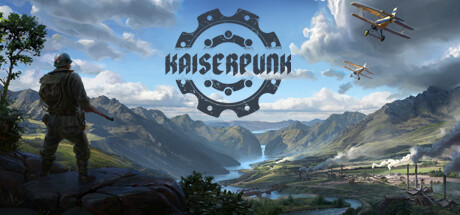Today, we’ll talk about the genre of Grand City Building and share our thoughts on it. Finding the right subgenre for this game has been challenging. Previously we’ve talked about Kaiserpunk as a mix between a City Builder and a Grand Strategy Game, which still holds true, but today we’d like to dig a little bit deeper into it and share our current thinking on the matter.

First of all, we need to talk about game loops, and especially the so-called core loops. As many of you probably know, core loops are a concept used to break down the key activities a player will do while playing a game, often seen over different time scales like moment-to-moment, minute-to-minute, quarter-to-quarter, hour-to-hour, etc. The exact length of the time scales tends to differ depending on the intensity of a game, e.g., shooters often have shorter loops than city builders.
Also, and the reason for this dev. diary, is that the core loops (especially minute-to-minute) tend to be how we define genres for games (and sometimes even name them after, such as 4X), apart from specific features ofc. This means that a shooter will most often have the same core loop; same goes for survival crafting and city builders etc. And this leads us to why we have started with this intro to game design 101. When we say Grand City Building, we are talking about the game’s core loops - and how they are unique.
Kaiserpunk is a city builder with the hour-to-hour loop of grand strategy. If we look at the minute-to-minute and quarter-to-quarter gameplay, our game is clearly a city builder. You place buildings, unlock new resources, research, satisfy the needs of your citizens etc. - all the things required to build a city. But as the game progresses into the hour-to-hour gameplay, things change. Your city is part of a living world, where other budding empires are vying for power in a running time simulation. Your task is to force the will of your city upon the world and become the pre-eminent power, leveraging your city’s economy to engage in trade, diplomacy, and most importantly, warfare. This hour-to-hour loop is what makes a strategy game grand (quite literally, grand strategy is the scholarly term for strategy that includes… well, trade, diplomacy, economy, and warfare). It is also the loop that makes our city builder grand. You are not only building a city - you will build a city to rule the world!

So how does this all tie together? Simply put, the grand part of our grand city builder is the why. In an alternate history where all the old powers went extinct in the Great War, you will forge the world anew. Several other powers are both potential allies and enemies, sometimes both. Through conquest and trade, you will get access to more and new resources, your fleets and armies projecting your power across the world. In the end, you will rise to become a dominant new power - bringing civilization back from the ashes.
The city builder part is the how and what. Every soldier marching will be trained in your military bases, every gun produced, every ration grown, milled, baked into bread, and packaged. Through the choices you make, your city can become the shining city upon a hill - leading the world through diplomacy and culture. Or you can become a warmaking behemoth - your populace toiling away in the massive industries feeding your war machine. Wherever your path will take you, your city is your engine, your tool, and the choices you make will shape your city accordingly. As such, your why influences the how and the what, and the how and the what will shape the why.
Build a city to rule the world - this is what a grand city builder is for us.
We’ve also released a new Feature Spotlight video on this same topic. Coincidence? We think not!
[previewyoutube=kq_n3-MWl6Y;full][/previewyoutube]
In the coming dev diaries we will talk a lot more about the hows, next one specifically focused on Warfare.
As always, let us know what you thought, and we’ll be back next week!
Overseer Games over and out
